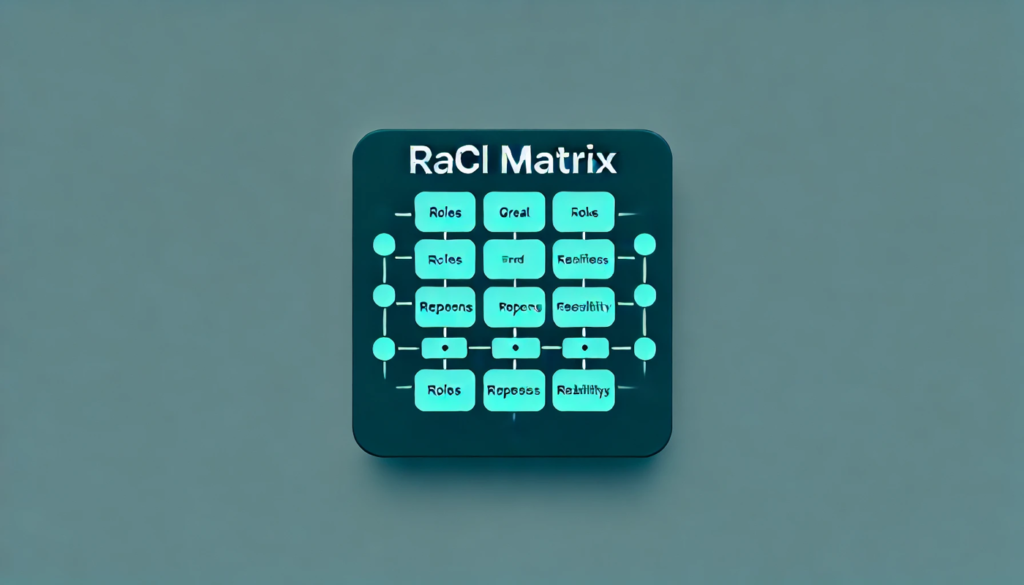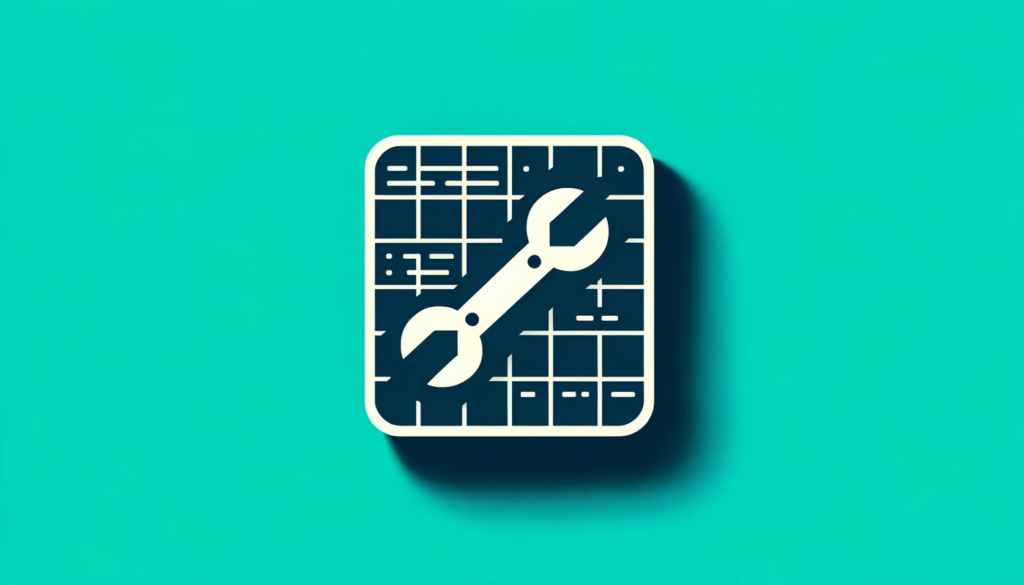What is the RACI Matrix and How Does it Enhance Project Management?

The RACI matrix, also known as the RACI model, might be a term you’ve heard before—especially if you work in the field of project management. But do you know how this model can enhance project management and make the job of project managers significantly easier?
If you’re part of a project management team or leading a project yourself, this article will become your magic wand. If you’re ready, let’s dive straight into the finer details of project management.
What is the RACI Matrix?
The RACI matrix, an acronym derived from the definitions of roles in project management, is a helpful tool designed to clarify the roles and responsibilities of teams involved in a project. This model categorizes each role based on their tasks in project management, aiming to eliminate unnecessary workloads, overlapping roles, and confusion.
The key objectives of the RACI model include improving workflow processes in project management, enhancing communication, ensuring the system operates optimally, clarifying team roles, and solving complex problems. In particular, the clarity of team responsibilities and the prevention of confusion make it incredibly beneficial for managing complex projects.
What Do the Letters in the RACI Matrix Represent?
Each letter in the four-letter RACI model represents a key element of the team. Who’s on your project team? Or who isn’t? Who do you get information from, and who do you provide information to? In short, whatever the role or responsibility in this game, each letter in RACI points to that individual.
👉 No surprises or nested roles like a Russian doll here! With the RACI model, it’s all about clarity and systematic workflow.
The RACI matrix, which can be described as a linear responsibility chart, is designed to assign responsibilities to individuals in project management. These responsibilities are marked with the letters R, A, C, and I. Each responsibility is aligned with a specific level and visually represented in a table to ensure a structured and organized approach.

1. Responsible
The individuals who carry out the tasks are referred to as Responsible. They are the ones who develop project deliverables, complete the project, and are directly involved in the implementation phase. Their primary role is to ensure the execution of the tasks they are responsible for.
Examples of roles typically classified as Responsible:
- Business Analysts
- Engineers
- Project Managers
- Content Specialists
- Developers
- Graphic Designers
- QA Specialists
2. Accountable
The person ultimately responsible for the task and the decision-maker is classified as Accountable. These individuals are held accountable for ensuring the project is delivered on time and meets its objectives. They take ownership of the project’s success and have the authority to make critical decisions.
Examples of roles typically classified as Accountable:
- C-Level Executives
- Team Leaders
- Authorized Signatories
- Product Owners
- Sponsors
3. Consulted
The individuals whose opinions are sought fall into this group. Consulted members typically play a critical role during key phases of a project. They provide guidance in areas such as legal processes, compliance, or any aspect that ensures the organization’s rights and interests are safeguarded.
Examples of roles typically classified as Consulted:
- Information and Operations Specialists
- Cybersecurity Experts
- Lawyers
- Accountants
- Marketers
- UX Specialists
4. Informed
The individuals who are kept updated about the task fall under the Informed category. These people are responsible for staying informed about the project’s progress and all its phases, from start to finish, but they are not actively involved in decision-making or execution.
Examples of roles typically classified as Informed:
- Project Committee Members
- Partners
- Business Owners
| Role | Definition | Assignment Limit |
| Responsible | The person who performs the task to complete the work. | At least 1 person per task |
| Accountable | The person who delegates the work and conducts the final review before accepting the task or deliverable as complete. | At most 1 person per task |
| Consulted | The person who provides input based on project activities or their area of expertise, depending on how it affects the deliverable. | No maximum or minimum limit |
| Informed | The person who needs to stay updated on the project’s progress but is not involved in the details of each deliverable. | No maximum or minimum limit |
How to Create a RACI Matrix?
If you’re unsure where to start and want to create a RACI matrix, here are a few simple steps to guide you:
1. Plan First, Then Execute
Begin by making a plan. Define the project’s goal, outline its framework, identify who needs to be contacted, and determine potential collaborators. All these elements should be addressed in the initial step.
2. Define the Project Scope
Outline the project’s shared objectives, target audience, design, and communication elements. List all key activities and deliverables that need to be addressed.
3. Build the Team
Identify who should be involved in the project and when each role (Responsible, Accountable, Consulted, Informed) is required.
4. Assign Roles
Clearly assign titles and individuals to the roles they will be responsible for.
5. Establish Communication
Communication is always critical. Arrange meetings with team members to establish clear and direct communication.
6. Ensure Efficiency
Once all the above steps are completed, ensure everything is in place and then start implementing the matrix.
Step-by-Step Instructions
| Step | Description |
| 1. Define Project Roles | Create a list of everyone involved in the project, including their names and roles. |
| 2. Identify Project Tasks | Break down the project into clear and specific tasks or deliverables after a detailed analysis of the project’s requirements. |
| 3. Assign RACI to Tasks | For each task, assign roles according to the RACI model. Ensure only one person is assigned as Accountable for each task. |
| 4. Align with Your Team | Meet with your team to strengthen communication and build synergy, ensuring everyone understands their roles. |
| 5. Align with Stakeholders | Review the RACI matrix with stakeholders and get their approval to ensure alignment and transparency. |
| 6. Make It Functional | Use the RACI matrix throughout the project to track responsibilities and ensure everyone knows who is responsible for what. |
Example RACI Matrix Table
Below is an example of a RACI matrix table. Each letter (R, A, C, I) represents the role and responsibility of an individual.
| Task / Activity | Project Manager (PM) | Team Member 1 (TM1) | Team Member 2 (TM2) | Customer Representative (CR) | Business Analyst (BA) |
| Requirements Analysis | A | R | C | C | R |
| Preparing Technical Design | A | R | C | I | C |
| Software Development | I | R | R | I | C |
| Testing and Validation | A | C | R | C | R |
| End-User Training | A | R | I | R | C |
| Project Closure Report | A | R | I | I | C |
Below is an example of a RACI matrix where team members’ names and their responsibilities are specified.
| Task / Activity | Responsible (R) | Accountable (A) | Consulted (C) | Informed (I) |
| Product Design | Mary | Jane | Stephen | Graham |
| Marketing Strategy | Jane, Stephen | Jane | — | — |
| Quality Control | Graham | Susan | Mark | Jane |
| Supply Chain Management | Janice | Stephen | — | — |
Let’s say you’re just starting out and need to design the RACI model for a project, putting it into a table to visualize and define the roles and responsibilities. Here’s how you can begin:
Project: Internal Training Program Organization
Key Tasks:
- Conducting Training Needs Analysis
- Developing Training Content
- Selecting and Inviting Trainers
- Logistic Arrangements
- Participant Registration and Communication
- Implementing the Training Program
- Collecting and Evaluating Feedback
- Assigning RACI roles to 7 key team members
Team Members:
- HR Director
- Training and Development Manager
- Training Coordinator
- Subject Matter Expert
- Administrative Affairs Officer
- Communication Officer
- Participants
RACI Table
| Task/Activity | HR Director (A) | Training and Development Manager (R) | Training Coordinator (C) | Subject Matter Expert (C) | Administrative Affairs Officer (R) | Communication Officer (R) | Participants (I) |
| Conducting Training Needs Analysis | A | R | C | C | I | ||
| Developing Training Content | R | C | R | ||||
| Trainer Selection and Invitation | R | R | C | ||||
| Logistic Arrangements | C | R | R | ||||
| Participant Registration and Communication | C | R | R | I | |||
| Implementing the Training Program | R | R | R | C | I | ||
| Collecting and Evaluating Feedback | A | R | R | C | C |
Why is the RACI Matrix Important?
Clarity, defining boundaries, and assigning tasks to the right people are just a few of the benefits of the RACI model. It provides a map of the relationship between the project and its contributors, simplifies organizational complexity, enhances organization, ensures seamless communication, and establishes common goals.
Whether you’re an experienced project manager or a beginner joining a project, the RACI model lets you know exactly what tasks you’ll be handling and clarifies the responsibilities of each team member from the start.
Who Should Be Responsible for RACI?
If everyone has a responsibility, shouldn’t someone also be responsible for managing the RACI model? Why not assign this duty to the project manager? Having the project manager establish human resources and the model at the start of the project sounds like a great idea!

Tools for Building a RACI Matrix
Need help creating this model through online tools? Here are a few excellent options:
- Trello
- Monday
- Asana
- Jira
- Miro
- Excel
When Should You Use a RACI Matrix?
When should you implement a RACI model? Here are some scenarios to consider:
- When managing a project involving multiple team members.
- When a project includes numerous stakeholders.
- For large-scale projects.
How to Effectively Use a RACI Matrix
Want some tips to apply the RACI matrix most efficiently? Keep these three rules in mind:
1. Every task should have at least one person responsible.
2. Only one person should be responsible for decision-making on each task.
3. Every team member should have at least one role.
How to Identify Issues in the RACI Matrix
- Too many R’s? It seems one person is being assigned too many tasks!
- No R’s at all? Who is actually completing the work in this project?
- No blank cells? Does every stakeholder truly need to be involved in every process?
- No A’s? Who is accountable for this project?
- Too many A’s? Having too many decision-makers can lead to conflicts!
- Too many C’s? Excessive consultations can slow down the project!
Advantages and Disadvantages of the RACI Matrix
Like many useful tools and models, the RACI matrix has its advantages and disadvantages. If you’re planning to use the RACI model in project management, you should explore the pros and cons of the RACI matrix in detail:
| Category | Advantages | Disadvantages |
| Responsibility and Accountability | Increased Participation: Encourages and ensures active involvement of project participants throughout the project. Group Accountability: Maintains connection, especially in large teams, and clarifies accountability regarding roles and goals. | Role Scope Limitations: Does not provide a clear definition, particularly for the “Responsible” role. It may lead to ambiguities about who is responsible for specific tasks like verification, approval, and sign-offs. |
| Project Management and Planning | Improved Project Planning: Helps project managers create more organized, efficient, and detailed plans. Clearly defining tasks and responsibilities lays a stronger foundation for the project plan. Easier Collaboration: Provides a clear pathway for leadership to approve project steps. Its emphasis on project documentation fosters a shared understanding among all stakeholders | Task Details and Scope Limitations: The RACI matrix identifies who is responsible for tasks but does not elaborate on how tasks should be performed or their full scope. |
| Communication and Improvement | Better Communication: Improves overall communication within the project team. Identifiable Improvement Opportunities: Makes it easier to identify areas for improvement in project processes. | Unsuitability for Agile Methodology: In projects using agile methods like Scrum, where accountability and communication are already integral to the framework (e.g., daily Scrum meetings, sprint planning), the RACI matrix may become an additional burden. |
Alternatives to the RACI Matrix
The RACI matrix is a widely used and highly advantageous model. However, it is not the only option available—there are many other models similar to RACI that you can explore. You are free to choose the model that suits your needs, and we can suggest a few alternatives based on your project requirements:
• RAPID: Defines who will Recommend, Agree, Perform, Input, and Decide in the decision-making process.
• RASCI: Similar to the RACI matrix but includes an additional Support role alongside responsible parties.
• DACI: A decision-focused model that emphasizes clear Decision Makers and targets final outcomes.
Comparison of RACI, RAPID, RASCI, and DACI Models
| Feature | RACI | RAPID | RASCI | DACI |
| Focus Area | Responsibilities in tasks and activities | Decision-making processes and roles | Responsibilities in tasks and activities (with an additional support role) | Decision-making and outcome-oriented |
| Roles/Responsibilities | R: Responsible A: Accountable C: Consulted I: Informed | R: Recommend A: Agree P: Perform I: Input D: Decide | R: Responsible A: Accountable S: Supporting C: Consulted I: Informed | D: Driver A: Approver C: Contributor I: Informed |
| Key Differences | Clearly defines roles and responsibilities in tasks and activities. It has a simple and straightforward structure. | Focuses on decision-making processes and clarifies who will take on which role at each step. Especially useful for complex and multi-stakeholder decision processes. | An extended version of RACI. Clarifies who will perform tasks and activities, who is responsible, and who needs to be informed. | Clearly defines who will make decisions and who is responsible for their outcomes. |
| Recommend Role (RAPID) | – | The person who provides a recommendation for a decision. Usually, the most knowledgeable person on the topic. | – | – |
| Agree Role (RAPID) | Similar to the Accountable role. | The person who accepts or approves the recommendation. Evaluates the feasibility and appropriateness of the decision. | Similar to the Accountable role. | Similar to the Approver role. |
| Perform Role (RAPID) | Corresponds to the Responsible role. | The person who implements and executes the decision. | Corresponds to the Responsible role. | – |
| Input Role (RAPID) | Similar to the Consulted role. | The person who provides information and expertise for decision-making. | Similar to the Consulted role. | Similar to the Contributor role. |
| Decide Role (RAPID) | Similar to the Accountable role but encompasses broader responsibility. | The person who makes the final decision and assumes responsibility. | Similar to the Accountable role but encompasses broader responsibility. | Corresponds to the Driver role. |
| Supporting Role (RASCI) | – | – | The person who assists the Responsible party, provides resources, or offers additional skills. | – |
| Driver Role (DACI) | Similar to the Accountable role. | Similar to the Decide role. | Similar to the Accountable role. | The person who drives the decision and assumes responsibility. Ensures the decision is implemented. |
| Approver Role (DACI) | Similar to the Accountable role. | Similar to the Agree role. | Similar to the Accountable role. | The person who officially approves and authorizes the decision. |
| Contributor Role (DACI) | Similar to the Consulted role. | Similar to the Input role. | Similar to the Consulted role. | The person who contributes to the decision process with information, expertise, and ideas. |
| Use Cases | Projects where tasks and responsibilities need to be clarified, especially simpler and medium-scale projects. | Complex and multi-stakeholder decision-making processes. | Projects where tasks and activities need clear allocation, and additional support is required. | Situations requiring quick and clear decision-making. |

